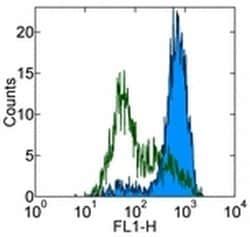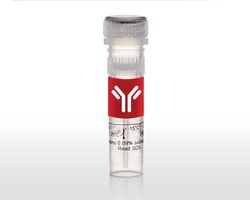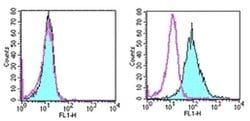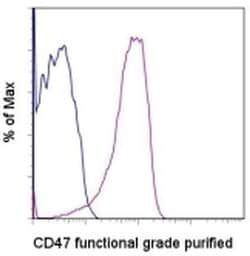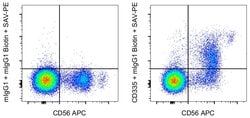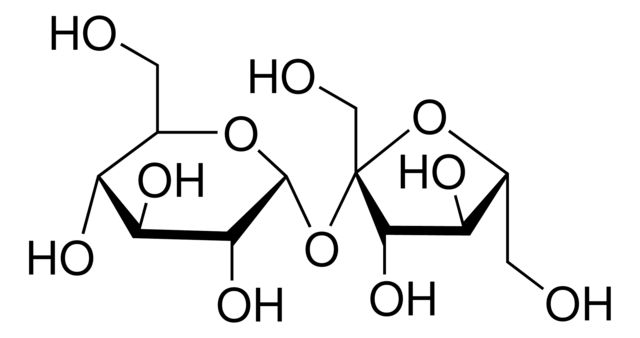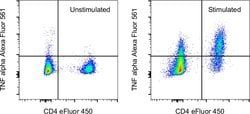7218903
CD209 (DC-SIGN) Monoclonal Antibody (eB-h209), eBioscience™, Invitrogen™
Rat Monoclonal Antibody
Manufacturer: Fischer Scientific
The price for this product is unavailable. Please request a quote
Antigen
CD209 (DC-SIGN)
Concentration
0.5 mg/mL
Classification
Monoclonal
Form
Liquid
Regulatory Status
RUO
Gene Accession No.
Q9NNX6
Isotype
IgG2a κ
Purification Method
Affinity chromatography
Gene
CD209
Clone
eB-h209
Applications
Flow Cytometry, Immunoprecipitation
Conjugate
Unconjugated
Host Species
Rat
Target Species
Human
Gene ID (Entrez)
30835
Primary or Secondary
Primary
Product Type
Antibody
Description
- Description: The eB-h209 monoclonal antibody reacts with human CD209, also known as DC-SIGN, a 44 kDa type II transmembrane protein
- DC-SIGN contains a C-type lectin binding domain and binds ICAM-3, ICAM-2, and HIV virus
- Human dendritic cells preferentially express DC-SIGN
- It has been postulated that DC-SIGN serves as a receptor for capture, trafficking, and transmission of HIV to T cells and supports primary immune response
- eB-h209 was developed against a C-terminal peptide of human DC-SIGN
- Applications Reported: The eB-h209 antibody has been reported for use in flow cytometric analysis, and immunoprecipitation
- Applications Tested: The eB-h209 antibody has been tested by flow cytometric analysis of cultured human dendritic cells and peripheral blood cells
- This can be used at less than or equal to 1 μg per test
- A test is defined as the amount (μg) of antibody that will stain a cell sample in a final volume of 100 μL
- Cell number should be determined empirically but can range from 10^5 to 10^8 cells/test
- It is recommended that the antibody be carefully titrated for optimal performance in the assay of interest
- Purity: Greater than 90%, as determined by SDS-PAGE
- Aggregation: Less than 10%, as determined by HPLC
- Filtration: 0.2 μm post-manufacturing filtered
- This gene encodes a transmembrane receptor and is often referred to as DC-SIGN because of its expression on the surface of dendritic cells and macrophages
- The encoded protein is involved in the innate immune system and recognizes numerous evolutionarily divergent pathogens ranging from parasites to viruses with a large impact on public health
- The protein is organized into three distinct domains: an N-terminal transmembrane domain, a tandem-repeat neck domain and C-type lectin carbohydrate recognition domain
- The extracellular region consisting of the C-type lectin and neck domains has a dual function as a pathogen recognition receptor and a cell adhesion receptor by binding carbohydrate ligands on the surface of microbes and endogenous cells
- The neck region is important for homo-oligomerization which allows the receptor to bind multivalent ligands with high avidity
- Variations in the number of 23 amino acid repeats in the neck domain of this protein are rare but have a significant impact on ligand binding ability
- This gene is closely related in terms of both sequence and function to a neighboring gene (GeneID 10332; often referred to as L-SIGN)
- DC-SIGN and L-SIGN differ in their ligand-binding properties and distribution
- Alternative splicing results in multiple variants.
Compare Similar Items
Show Difference
Antigen: CD209 (DC-SIGN)
Concentration: 0.5 mg/mL
Classification: Monoclonal
Form: Liquid
Regulatory Status: RUO
Gene Accession No.: Q9NNX6
Isotype: IgG2a κ
Purification Method: Affinity chromatography
Gene: CD209
Clone: eB-h209
Applications: Flow Cytometry, Immunoprecipitation
Conjugate: Unconjugated
Host Species: Rat
Target Species: Human
Gene ID (Entrez): 30835
Primary or Secondary: Primary
Product Type: Antibody
Antigen:
CD209 (DC-SIGN)
Concentration:
0.5 mg/mL
Classification:
Monoclonal
Form:
Liquid
Regulatory Status:
RUO
Gene Accession No.:
Q9NNX6
Isotype:
IgG2a κ
Purification Method:
Affinity chromatography
Gene:
CD209
Clone:
eB-h209
Applications:
Flow Cytometry, Immunoprecipitation
Conjugate:
Unconjugated
Host Species:
Rat
Target Species:
Human
Gene ID (Entrez):
30835
Primary or Secondary:
Primary
Product Type:
Antibody
Antigen: TNF alpha
Concentration: 0.2 mg/mL
Classification: Monoclonal
Form: Liquid
Regulatory Status: RUO
Gene Accession No.: P06804
Isotype: IgG1 κ
Purification Method: Affinity chromatography
Gene: Tnf
Clone: MP6-XT22
Applications: Flow Cytometry
Conjugate: Alexa Fluor 561
Host Species: Rat
Target Species: Mouse
Gene ID (Entrez): 21926
Primary or Secondary: Primary
Product Type: Antibody
Antigen:
TNF alpha
Concentration:
0.2 mg/mL
Classification:
Monoclonal
Form:
Liquid
Regulatory Status:
RUO
Gene Accession No.:
P06804
Isotype:
IgG1 κ
Purification Method:
Affinity chromatography
Gene:
Tnf
Clone:
MP6-XT22
Applications:
Flow Cytometry
Conjugate:
Alexa Fluor 561
Host Species:
Rat
Target Species:
Mouse
Gene ID (Entrez):
21926
Primary or Secondary:
Primary
Product Type:
Antibody
Antigen: TNF alpha
Concentration: 0.2 mg/mL
Classification: Monoclonal
Form: Liquid
Regulatory Status: RUO
Gene Accession No.: P06804
Isotype: IgG1 κ
Purification Method: Affinity chromatography
Gene: Tnf
Clone: MP6-XT22
Applications: Flow Cytometry
Conjugate: Alexa Fluor 561
Host Species: Rat
Target Species: Mouse
Gene ID (Entrez): 21926
Primary or Secondary: Primary
Product Type: Antibody
Antigen:
TNF alpha
Concentration:
0.2 mg/mL
Classification:
Monoclonal
Form:
Liquid
Regulatory Status:
RUO
Gene Accession No.:
P06804
Isotype:
IgG1 κ
Purification Method:
Affinity chromatography
Gene:
Tnf
Clone:
MP6-XT22
Applications:
Flow Cytometry
Conjugate:
Alexa Fluor 561
Host Species:
Rat
Target Species:
Mouse
Gene ID (Entrez):
21926
Primary or Secondary:
Primary
Product Type:
Antibody
